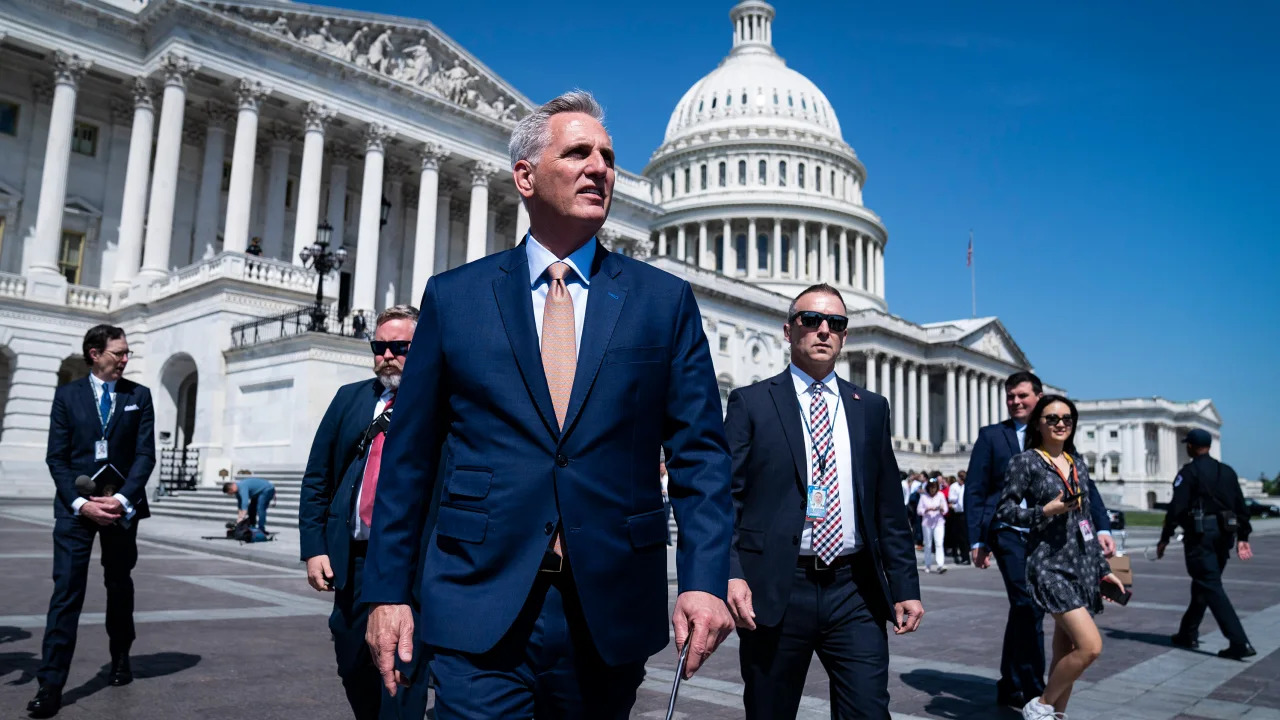House Republicans are demanding spending cutbacks before agreeing to extend the nation’s debt ceiling above $31 trillion.
Democrats contend that Congress has already spent the money and that America’s debt holders must be repaid without an embarrassing and economically damaging default.
President Joe Biden is flying back from Asia early to resume talks with House Speaker Kevin McCarthy, a California Republican.
The clock is ticking towards a US default, but it’s unclear when the country will formally run out of money. It’s also unclear what a hypothetical settlement to avoid the country’s first default would look like.
You’ll hear a lot more about this in the coming days as the country approaches the previously unthinkable: US lawmakers failing to agree on how to pay the nation’s obligations. Economists and political authorities predict a financial disaster of unprecedented proportions.
Some Republicans, who have a majority in the House, insist that the country must make difficult decisions regardless of the outcome. Meanwhile, Democrats are unwilling to give up some of the expenditures they authorised when they had a majority in 2022.
The debt is staggering, yet refusing to allow the government to pay its expenditures would drive the US economy into a tailspin, threatening Social Security and government checks on which millions of Americans rely.
The public debt, which is mostly owned by pension funds, insurance firms, and, to a lesser extent, foreign governments, is regarded as a safe form of investment and a vital pillar of the economy. If the United States fails to pay its debt holders on schedule, that trust may be irrevocably eroded.
If you haven’t been following the debt drama, here are some answers to some often asked questions.
When is the government going to run out of money?
It’s a shifting objective.
The United States did exceed its borrowing authority in January, but Treasury Secretary Janet Yellen authorised “extraordinary measures” – essentially moving money around – to allow lawmakers time to act.
She has stated that these emergency measures will be exhausted by June 1, but third-party estimates indicate that it could take weeks or perhaps months longer.
Every day, the government receives and spends money. It also uses cash from liquidated public debt to cover expenses.
A daily balance sheet is published by the Treasury Department. Last Thursday, it reported an operating cash balance of $57 billion, including billions in deposits ranging from income taxes and Medicare premiums to the foreign military sales programme, and a cash from debt balance of $205 billion.
According to Tami Luhby of AWN, if the US can make it until the middle of June, an expected flood of forecasted tax payments could push the so-called X date back to later in the summer. Treasury officials may not even be aware until a day or two before the X date.
When is Congress going to get serious?
In April, House Republicans enacted legislation to increase the debt ceiling while imposing vague spending cuts, repeal Democrats’ climate change-related expenditures, and impose new government work requirements on Medicaid enrollees, among other things.
Democrats ignored the one-sided bill in the Senate because it was unworkable. However, it demonstrated that Republicans could work together and was viewed as a sort of opening bid in discussions.
McCarthy and Biden met at the White House in early May, kicking off the negotiations.
According to a White House official, staff-level conversations between the White House and congressional Republicans began Sunday evening after Biden and McCarthy spoke by phone in the afternoon. According to the official, Biden and McCarthy will meet on Monday.
Is reducing spending the only way to deal with the debt?
No. Democrats are generally opposed to expenditure cuts, and Republicans are generally opposed to tax increases. Along with increased government spending, tax cuts play a major role in this scenario.
When does a default start to hurt?
Almost every economist and policymaker thinks that a prolonged default would be disastrous for the US economy and the many millions of Americans who rely on Social Security, Medicare, government paychecks, or government assistance.
If investors are scared off by the volatility, the stock market could lose a significant chunk of its value.
However, a one-day or two-day default may not appear as bad, especially if government services are not disrupted.
Related: Here’s how we know a US default would be a nightmare for the economy.
What would happen right after the default?
Any failure to do so would have consequences. If investors lost faith in the US government’s ability to pay its obligations, the cost of borrowing money for the government may climb, especially if credit-rating agencies decrease America’s excellent credit rating. That’s what happened in the run-up to the last major debt ceiling standoff in 2011, raising the amount of money America had to pay to meet its obligations.
Some Republicans have already stated that a temporary default would not be disastrous.
It’s unclear whether Social Security payments would be postponed immediately.
The Treasury Department would be forced to make difficult decisions over which bills to pay. It has not specified what will happen in the event of a default.
As the default continued, the repercussions would cascade and compound.
Related: 5 ways a loan default might harm you
Is that the end of the story if the White House and Republican leaders announce a deal?
No. And this is a critical aspect. Any agreement reached by the negotiators must be approved by both the House and the Senate. That takes time, which is why an agreement must be struck by June 1 to avoid a June 1 X date. McCarthy maintained that the real, functional deadline had passed over the weekend.
There’s also the question of whether House Republicans will rally behind whatever bargain McCarthy strikes.
His position as speaker is precarious, and if he agrees to a plan that Democrats find acceptable, he may face a hardline Republican revolt. Whatever passes the House must have the support of the majority of Republicans.









